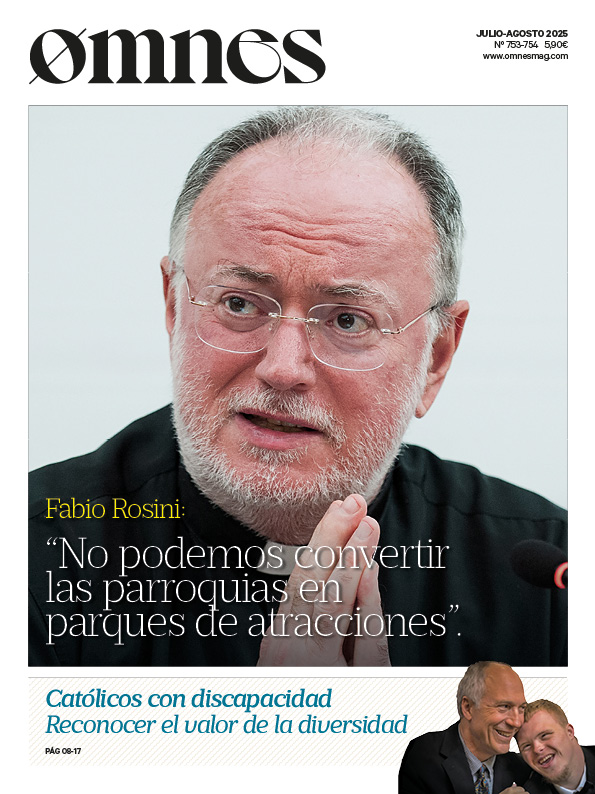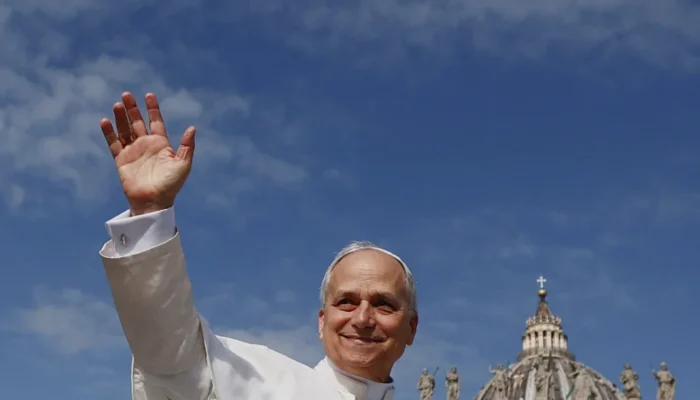One of the few works that Bach composed in Latin is, paradoxically, one of his most famous and valuable: Magnificat BWV 243, composed in his first months as Cantor of St. Thomas in Leipzig (1723) and retouched later (1733) until it reached the form in which it is usually heard today. A work in which the fervent Lutheran Johann Sebastian Bach sets to music the divinely inspired words with which the Virgin Mary sings to God: the Magnificat, which the Catholic Church sings daily at Vespers.
For an important occasion
In Leipzig, tradition demanded that the Magnificat be sung at evening services, in German on ordinary Sundays and in Latin on the most important feast days. That is why Bach chose to set to music the Latin text from Lucas 1, 46-55, according to St. Jerome's Vulgate. The weight of liturgical tradition explains why an inveterate reader of Luther's German bible set a Latin biblical text to music.
On his first Christmas as Cantor in Leipzig, Bach presented a Magnificat in E-flat major, his first major liturgical work in his new post, which was performed on Christmas Day evening 1723 along with his cantata BWV 60. This first Magnificat, intended for the Christmas season, was composed incorporating four short Christmas hymns in German, which were interspersed between the stanzas of the Latin text.
Ten years later, Bach slightly retouched this first Magnificat, giving rise to the work that concerns us in this article. He transposed it to D major, eliminating the Christmas hymns and modernizing the orchestration. Indeed, he replaces the recorders with the then recent flutes, and enriches the woodwind by adding to the two oboes of 1723 two oboes d'amore, an instrument that was beginning to be incorporated into the orchestra at that time and that Bach preferred for some of his most emotional melodies.
This orchestration of the Magnificat is, in any case, truly magnificent, and includes the largest orchestral staff that could be found in Saxony in 1733, so complete that it lacks only two horns to reach the orchestral maximum of the early 18th century. This magnificence leads one to suppose that it was premiered on a great feast, probably in the church of St. Thomas in Leipzig for the Vespers service of the Visitation Day of 1733, which the Lutheran liturgy celebrated on July 2. For the same festive occasion Bach also composed in other years two important cantatas: the very famous BWV 147 (usually heard at almost every wedding) and BWV 10 (simpler, with its text based on Luther's German Magnificat).
The biblical text is presented in eleven musical numbers, followed, as is typical of the Vespers liturgy, by a final doxology. The sequence of numbers shows the composer's predilection for symmetry and rhythmic and timbral variety. This can be seen in the following.
A Lutheran painting of the Virgin Mary
In its first verses (Luke 1, 46-50), the biblical text expresses in its words as a portrait of the Heart of Mary, which Bach will paint with the color and expression of his music. If there are not many images of the Virgin in the austere Lutheran iconography, this is perhaps the most expressive of all.
The first number, like the last and central one, is composed by a large five-voice choir (two sopranos, altos, tenors and basses), accompanied by the splendor of the entire orchestra. It begins and ends this first number as a concert, with a wide and jubilant intervention of the orchestra, which prepares and closes the intervention of the choir. The choir sings the first word Magnificat, with exultant and rhythmic joy, an image of Mary's intense joy when she discovers the fulfillment of the divine promise in Elizabeth's pregnancy.
In the second number, where the musicians are suddenly reduced to the soprano and strings, the joy of the Virgin continues to be sung, but this time as if from the bottom of her humble heart, with an atmosphere full of intimacy and cordiality.
The third number, the first in minor mode, features the melancholy, silky and delicate timbre of the oboe d'amore, which gradually intertwines with the soprano to express the contemplation of Mary's humility. With a delicate, descending melodic line, the word "humilitatem" paints the fundamental feature of Mary's Heart in a way that beautifully evokes the purity and simplicity of the Virgin. When the text indicates that the Humble Virgin will be congratulated by all generations, a tremendous four-voice choir (omnes generationes) bursts forth over a thundering bass line, describing the fervent multitude that throughout the ages has devoutly congratulated the Virgin Mary.
Again by contrast, the fifth number is entrusted to the lowest and most serious possible staff: solo bass accompanied by basso continuo. In a surprising musical minimalism, Maria praises the greatness of the Mighty and Holy God, who draws near to the lowliest to favor them with His Mercy. In fact, the following number sings of the Divine Mercy in an ethereal and nostalgic spirit. Only the alto and tenor duet, with a very delicate accompaniment of violins on muted violins doubled by the flutes. A serene contemplation of the Mercy of the God who has shown his Power, his Goodness and his Wisdom in the Virgin Mother.
God's work
In the following verses of the biblical text (Luke 1:51-55) Mary describes God's action in favor of the humble people of Abraham's descendants. The seventh number is the central one of the whole work, and symmetrically reproduces the same musical template as the first one, but this time to cause an intense earthquake with the whole orchestra. In this catastrophe, diverse expressive figures and dynamic coloraturas in the voices show how the superb ones are dispersed to the four winds. As if this were not enough, the end of this number slows down the tempo to express how the superb mente cordis sui are crushed, as evoked by the forceful blows of the orchestra.
In the next number, a lively aria for tenor and two violins brings down the mighty amid the descending pulls of the violins' melody, then exalts the lowly to the heights with the tenor's rapid ascending coloratura. Calming the mood, but with similar content, comes perhaps the most famous aria of this composition, entrusted to the alto and two flutes. With these humble resources, the ninth number confirms that the hungry (esurientes) will be filled with good things, while in rapid musical descents the rich are sent away empty. The wealth with which God fills the wretched is depicted in the very long melisma that the soloist has to make on the word implevit, the longest of the whole work.
The last verses focus more closely on the kindness with which God has treated his people. Thus in number 10, a trio of two sopranos and alto sings with a peculiar harmony how God has remembrance (recordatus) for his servant Israel, while two oboes in unison intone the melody of the Lutheran Magnificat, as if evoking a choral prelude for organ.
The closing is provided by a four-voice choir with the perfect and fluid Bachian counterpoint on God's promises to Abraham, at whose name the counterpoint stops to underline in unison the name of the patriarch who is our father in faith, and, therefore, from whom the Virgin Mary descends.
The final doxology begins with two invocations sung by the choir and the entire orchestra in unison to the Father and the Son, in musical equality, followed by an invocation of greater dynamism, but similar style, for the Holy Spirit, a resource that shows the precise musical formulation with which Bach usually approaches in his works to the faith in the Holy Trinity. It all culminates with the repetition of the first number, thus closing the symmetrical structure of this monumental composition, but this time singing sicut erat in principio, et nunc, et in saecula saeculorum. Amen.
Doctor of Theology








